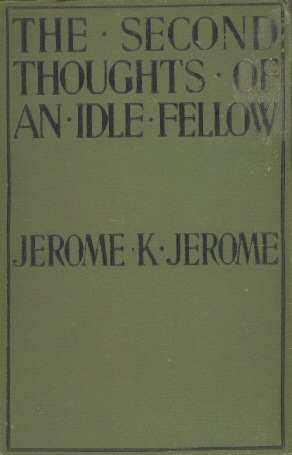
G.Having just diagnosed himself with every illness in his medical textbook, and feeling generally run down by the grind of the city, the narrator of Three Men in a Boat convinceshis friends, George and Harris, to take a boat ride up the Thames. Barrie and the Politics of Social AwkwardnessĬhapter 6. The Mysteries of Male Friendship: Uncovering the Club in Stevenson, Doyle, Chesterton, and SayersĬhapter 5. In Which There are Surprisingly Few Actual ProblemsĬhapter 4.

The Club Story and Social Mobility: Rules for Readers in Israel Zangwill and Barry Pain ‘Why should not the paper as a whole appeal to her?’Ĭhapter 3.

The Pressroom and the Clubroom: Working Women and Idling Men in Jerome K. The Establishment of the ‘Idler’s Club’: A Close EnvironmentĬhapter 2. Club Chatter, Gossip, and Smoking: The Idler’s Club Column as a Reader’s Space Their humorous, fictional clubs aided the social mobility of the authors who created them, who in turn served as models for the readers who might never cross the literal thresholds of Clubland.Ĭhapter 1. Rather than doing away with the club itself, these authors embraced the paradoxes of the club and re-defined it as a space of possibility. Barrie, Arthur Conan Doyle, Barry Pain, Israel Zangwill, and even P. At the turn of the century, amid intense social change, the club became the subject of sustained humour in the Idler magazine and its circle, from editors Jerome K. Poking fun at Victorian social clubs became a way of asserting and redefining social belonging. Introduces humour into the discussion of feelings about reading.Chesterton, Robert Louis Stevenson and Israel Zangwill Treats lesser-known or lesser-studied works by authors who attract more critical attention: J.Treats well-known, yet under-studied, popular authors: Jerome K.Connects, biographically and stylistically, figures that have developed disparate reputations.

Primary sources are mainly published literary works, both periodicals and books.Focuses on Victorian humour, a subject that is undergoing a renaissance.Investigates whether a popular magazine can promote social mobility by joking about clubs


 0 kommentar(er)
0 kommentar(er)
